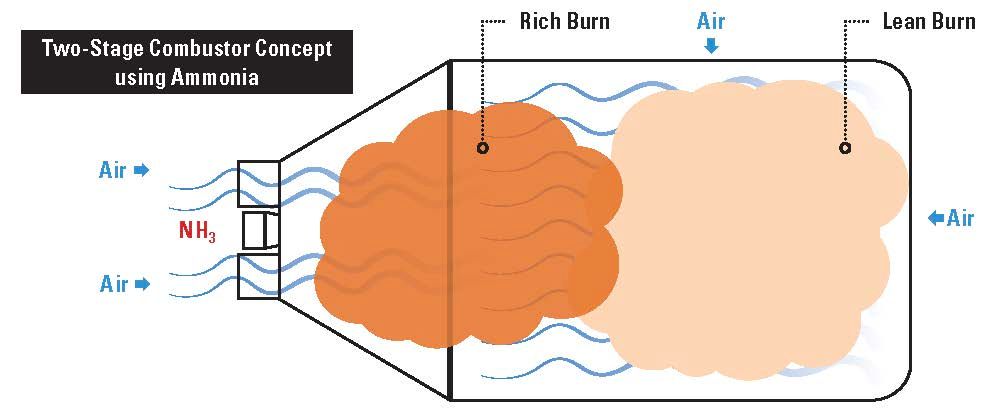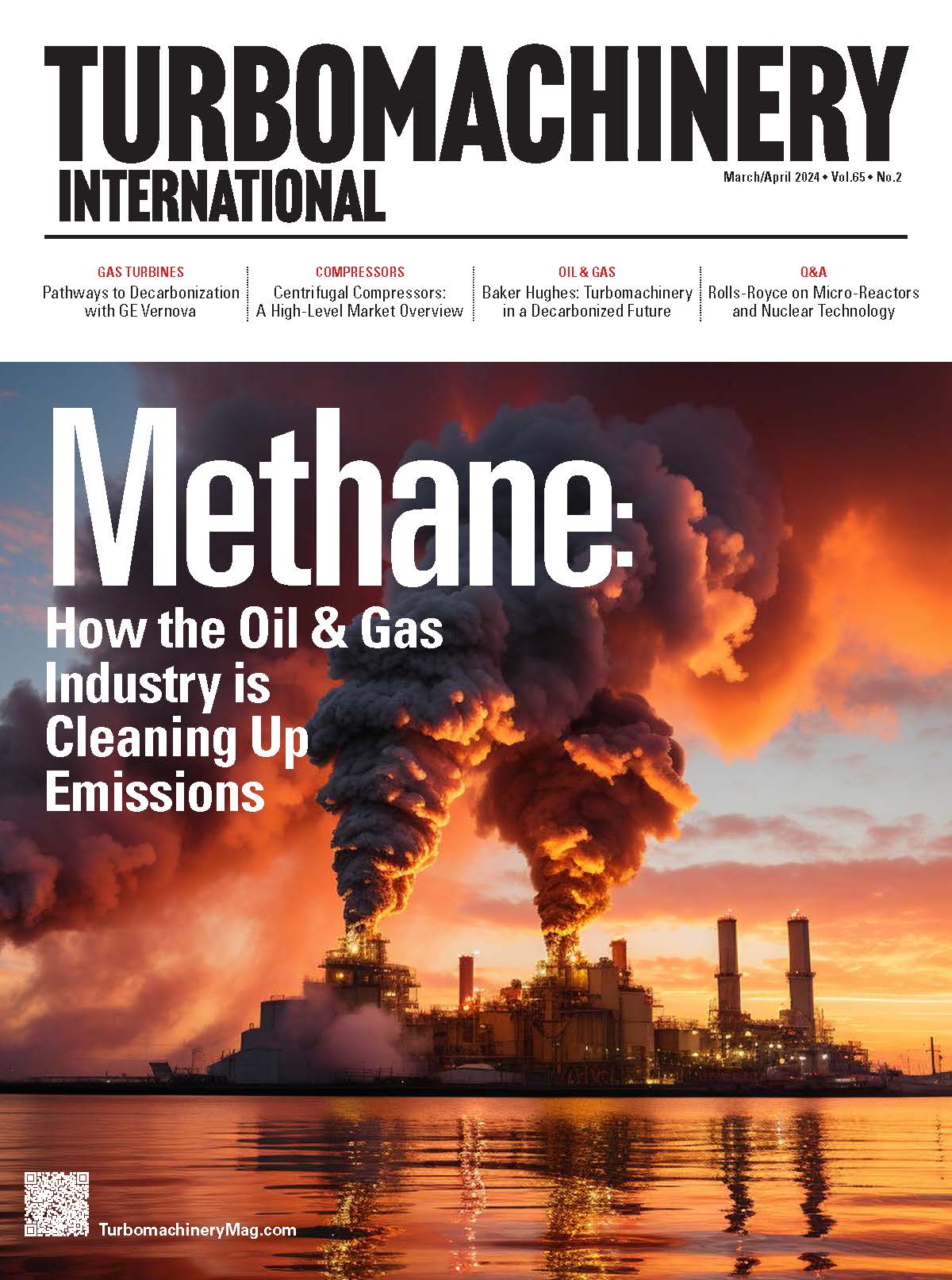Pathways to Decarbonization with GE Vernova
Jeffrey Goldmeer of GE Vernova discusses the steps toward a decarbonized energy economy—from supply and cost to turbomachines and lower-carbon fuels.
The road to decarbonization is a diverse mix of solutions that includes advanced turbomachines, lower-carbon fuels, renewables, regulatory support, and a lot of collaboration.
As the industry moves toward a sustainable energy ecosystem, organizations are looking at it from all angles, including infrastructure, supply, cost, technology, and science.
A MATTER OF SUPPLY AND COST
Lower-carbon fuels such as hydrogen and ammonia present both opportunities and obstacles for power generation.
Infrastructure is one barrier.
Along the Gulf Coast spans roughly 1,600 miles of a hydrogen-ready pipeline—it is home to the largest consumption and production of hydrogen in the United States. So, if you’re down south, infrastructure is not an issue.
But “what we’re talking about is a future where the production and use of hydrogen are more decentralized across the United States,” said Dr. Jeffrey Goldmeer, Global Hydrogen Value Chain Leader at GE Vernova. “That might imply a lack of infrastructure in other places, but those places today don’t have large-scale hydrogen production or consumption. So, it’s not a matter of infrastructure—we just haven’t developed the hydrogen ecosystem in those locations.”
That said, many companies are producing and using hydrogen locally for applications such as fuel cells and forklifts, but one difference between these uses and power generation is transportation. Hydrogen, in these cases, is being transported by trucks because these industries don’t have the volume that requires a pipeline.
Beyond infrastructure lies the issue of technology. But as OEMs like GE Vernova build out hydrogen-ready machines, supply and cost are the two major barriers that power generation encounters, not technology.
“This is not a technology gap,” Goldmeer said. “All the OEMs are on a path to develop advanced combustion systems to burn 100% hydrogen. Many gas turbines today can already burn 100% hydrogen using diffusion flame combustion systems. The real challenge to operating at 100% hydrogen on a gas turbine is scale: scale of supply. Gas turbines can consume a large amount of fuel very quickly. We have the infrastructure to deliver that fuel for natural gas systems; we don’t have that infrastructure to deliver hydrogen as a power-generation fuel because we’ve not had to.”
Thus, creating the second barrier: cost. Whichever way hydrogen is produced, it comes with a price premium compared to natural gas.
“Cost is a barrier. The way we dispatch gas turbines today is really a function of the lowest cost of electricity, so you need the lowest cost fuel,” Goldmeer said. “We don’t have a carbon tax or something else to level the cost [of hydrogen], so you choose the lower-cost fuel. [It then becomes] a matter of how we set up the electricity markets, how we think about infrastructure, and how we think about fuel cost: Do we prioritize lower-carbon fuels and incentivize them with subsidies?”
HYDROGEN-READY COMBUSTORS
As Goldmeer mentioned, legacy diffusion flame combustion systems can not only support 100% hydrogen, but they are extremely reliable; however, hydrogen’s high flame temperatures, along with other behaviors, have made it a challenge for dry low NOx/emissions (DLN/DLE) combustor systems.
To combat this, “GE Vernova and most OEMs are investing in next generation combustion systems to create DLN combustors that can burn 100% hydrogen,” Goldmeer said. “But again, we’re looking at this with a new focus: How do I use 100% hydrogen in a combustor that has specific roles that we have to maintain around efficiency and NOx? But we have decades of experience with DLN systems, and we’ve learned more about how hydrogen behaves, so now we’re taking all these experiences from the last 30 - 40 years and bringing them to bear with new technologies and design tools and developing next-generation combustors."
WHAT ABOUT AMMONIA?
Ammonia is another lower-carbon fuel that has an established global network of infrastructure (There’s already a global community and trade in ammonia, and the United States has 3,000 miles of ammonia pipeline.), and it has economic advantages over hydrogen. Contrary to hydrogen, ammonia condenses at -33° C, so it requires significantly less energy to move.
Yes, there are toxicity issues, but as Goldmeer points out, the industry already safely moves 15 - 20 million tons of ammonia each year, so there are solutions to this hurdle. And although ammonia will require a new combustion system to resolve NOx production, the industry is already in the process of engineering new systems.
“I trust that engineers in the industry will solve these problems, and now it’s just a matter of weighing under what situations do the economic benefits make sense for the use of ammonia versus hydrogen or other fuels,” Goldmeer said.
COMBUSTING AMMONIA
As stated, ammonia also creates combustion challenges. Legacy diffusion flame systems run near stoichiometric conditions, whereas DLN systems run lean and reduce NOx emissions with natural gas but cause emission issues with ammonia.
“The fundamental question then is what combustion system resolves the fundamental chemistry issue, because this is a chemistry issue,” Goldmeer said. “The science itself behind these systems isn’t new but the application is.”

Today, GE Vernova’s technology either runs at or near stoichiometric—i.e., fuel and air in perfect chemical balance—or on the lean side, but the rich side of the stoichiometric dome—fuel-rich and oxygen lean—provides less air for the nitrogen to turn into NOx when using ammonia. To this point, GE Vernova and IHI are developing a two-stage combustion system with a rich dome to resolve the ammonia-NOx problem—building upon IHI’s development of a 2-MW gas turbine using 100% liquid ammonia and GE Vernova’s expertise in engineering and manufacturing of gas turbine combustion systems and balance of plant systems.
“The solution is we don’t take today’s combustion systems and repackage them; we go back to the fundamental science of combustion and look for the answer there and it gives us the answer,” Goldmeer said. “We’ll be focused on the technological development and technical deliverables, aiming for the validation of the combustion technology in the next two years and a potential commercially available product by 2030.”
LOOKING TO THE FUTURE
Looking toward 2030, Goldmeer said building out both solar and wind is paramount to a decarbonized future. In fact, GE Vernova signed up to build 674 onshore wind turbines for the SunZia Wind Project, set to go online in 2026 and projected to be the largest wind project in the Western Hemisphere.
There's a lot of momentum with wind and solar.
As many regulations are still in flux and need to shake out, the Department of Energy’s plan for seven hydrogen hubs across the United States will help build out the infrastructure needed to support hydrogen and ultimately drive costs down.
“These hubs are all about supply and demand—how to make and use hydrogen,” Goldmeer said. “If they are successful, in 10 -15 years you’re going to see the large-scale production of hydrogen not just in the Gulf Coast but lower-carbon intensity hydrogen in different parts of the United States.”
Gas turbines running on natural gas are also part of a decarbonized future, as they provide reliable, dispatchable power. “I’m hoping over the next 5 - 15 years we start to see some of those units available to operate on hydrogen, but again, it’s a hydrogen supply issue, not a gas-turbine technology issue,” Goldmeer said.
Ensuring that gas turbines are 100% hydrogen-capable when the fuel supply becomes available is paramount for GE Vernova and the industry so that gas turbines are not a barrier to decarbonizing the power generation sector.
In the meantime, hydrogen can be used by other industries to reduce their carbon emissions. “Maybe hydrogen doesn’t go into power, maybe hydrogen goes into mobility applications such as fuel-cell vehicles. Hydrogen isn’t the answer for just gas turbines. There are so many other places where it makes sense to use it. I’d like to see it here on the Gulf Coast as we start producing more and more hydrogen that’s at a lower carbon intensity to put into fertilizer production. Let’s take a real bite out of carbon intensity and some of these industries that use hydrogen today.”
In the end, it's about pathways to decarbonization.
Check out the TurboTime podcast to hear more from Dr. Jeffrey Goldmeer.
